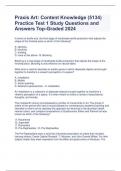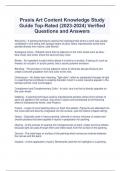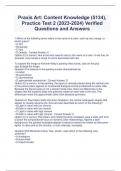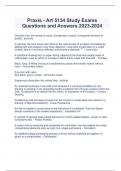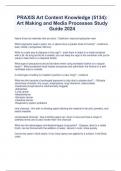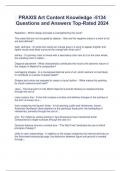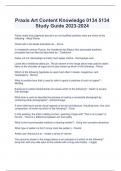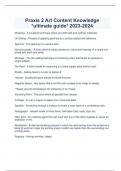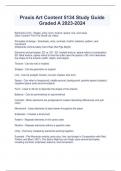Package deal
COMBINED Praxis Art Content 5134 Study Guide Graded A
COMBINED Praxis Art Content 5134 Study Guide Graded A COMBINED Praxis Art Content 5134 Study Guide Graded A COMBINED Praxis Art Content 5134 Study Guide Graded A COMBINED Praxis Art Content 5134 Study Guide Graded A COMBINED Praxis Art Content 5134 Study Guide Graded A
[Show more]
